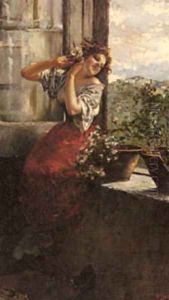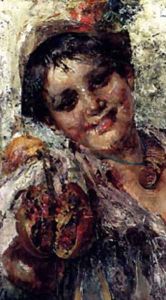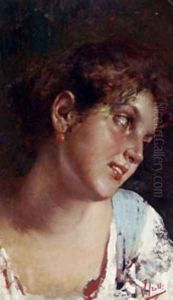Irolli Vincenzo Paintings
Vincenzo Irolli was an Italian artist born on September 30, 1860, in Naples, a city renowned for its rich cultural and artistic heritage. From an early age, Irolli demonstrated a profound interest in art, a passion that would guide the course of his entire life. He honed his skills at the prestigious Accademia di Belle Arti di Napoli, where he was influenced by the vibrant Neapolitan painting tradition, a movement that was known for its dynamic use of color and light, characteristics that would later become hallmarks of Irolli's own work.
Throughout his career, Irolli was celebrated for his portraits, genre scenes, and religious compositions, showcasing a remarkable versatility and a deep understanding of human emotion and expression. His style evolved over the years, initially rooted in the academic traditions of his education but gradually becoming more expressive and vibrant, reflecting the influence of Impressionism and Post-Impressionism. Despite this evolution, Irolli's work remained distinctly Italian, imbued with the warmth and vitality of his Neapolitan surroundings.
Irolli's art was widely appreciated during his lifetime, both in Italy and abroad, leading to numerous exhibitions and accolades. He was particularly adept at capturing the everyday life of his contemporaries, blending realism with a romantic sensibility that made his paintings deeply appealing to a broad audience. Beyond his paintings, Irolli also contributed to the art world through his involvement in various artistic circles and societies, helping to foster a vibrant cultural scene in Naples and beyond.
Vincenzo Irolli died on December 22, 1949, leaving behind a rich legacy that continues to be celebrated. His works are held in many prestigious collections and museums, and his contribution to the Italian art movement of the late 19th and early 20th centuries remains significant. Through his vibrant canvases, Irolli captured the spirit of his time, making him one of the most memorable figures of the Italian artistic panorama of his era.



